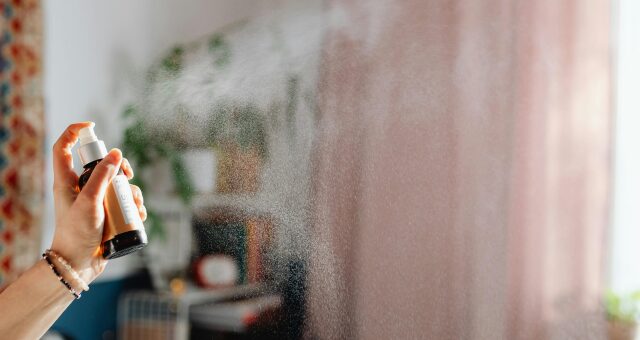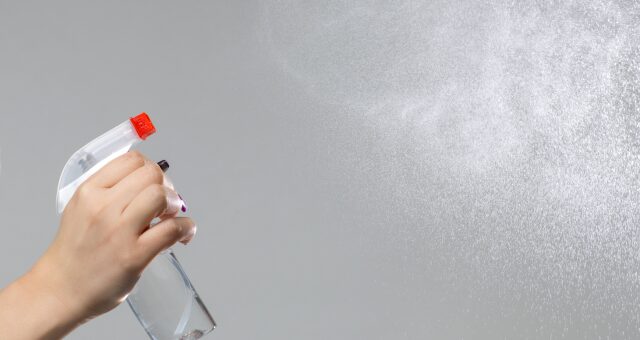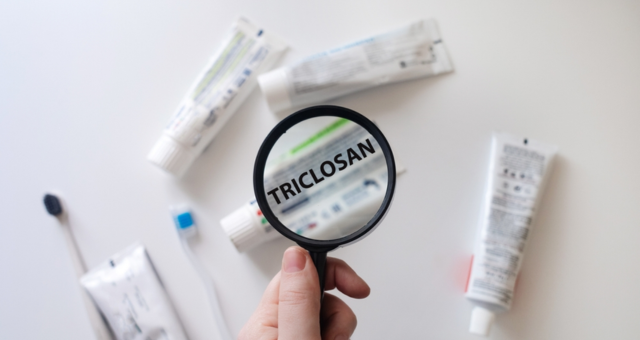Medically Reviewed by Lucas Rosa, PhD in Molecular Biology
Take a moment and think about how many scented products you use in a day. Soap, shampoo, deodorant, laundry detergent, air fresheners, candles, lotions — the list goes on.
Most of these products list “fragrance” or “parfum” on the label, but what exactly does that mean?
Here’s the truth: synthetic fragrances are one of the most common and unregulated sources of hormone-disrupting chemicals in our daily lives.
In this blog, we’ll explore what synthetic fragrances are, where they’re commonly found, what chemicals they contain, how they can disrupt your hormonal balance, and what you can do to lower your exposure.
What Are Synthetic Fragrances?
Synthetic fragrances are man-made scent compounds developed in laboratories to mimic natural smells or create entirely new ones. Unlike essential oils that are extracted from plants, synthetic fragrances are made using petrochemicals and other industrial substances. (1)
They’re cheap, long-lasting, and easy to mass-produce, which is why they’re used in over 95% of scented consumer products.
Where Are Synthetic Fragrances Found?
Everywhere. Synthetic fragrances are used in products marketed for cleanliness, beauty, and relaxation. Even many “unscented” products may contain masking fragrances to hide chemical smells. Here are some common sources:
- Body Sprays and Perfumes
- Shampoos and Conditioners
- Laundry Detergents and Dryer Sheets
- Body Lotions and Creams
- Candles and Air Fresheners
- Cleaning Products
- Sunscreens and Deodorants
- Cosmetics and Makeup
Basically, if it smells good and doesn’t say “fragrance-free” or “made with essential oils only,” it probably contains synthetic fragrance.

What’s Hiding Behind the Word “Fragrance”?
This is where things get concerning. When you see “fragrance” or “parfum” on a label, it can legally represent a mixture of dozens to hundreds of chemicals. Manufacturers are not required to disclose the individual components because they’re considered trade secrets.
Some of the most common and harmful chemicals found in synthetic fragrances include:
1. Phthalates
Phthalates are used to make scents last longer. Known to disrupt estrogen and testosterone levels, and linked to infertility, early puberty, and hormone-related cancers.
2. Musk Compounds (e.g., Galaxolide, Tonalide)
Synthetic musks accumulate in fat tissue and are endocrine disruptors that can interfere with hormone receptors and cellular function.
3. Benzene Derivatives
Derived from crude oil, benzene-based compounds can affect the nervous system and are linked to certain cancers.
4. Formaldehyde Releasers
Some fragrance mixtures release formaldehyde, a known carcinogen that can also impair thyroid and hormone function.
How Synthetic Fragrances Affect Hormonal Health
Let’s connect the dots. Many chemicals in synthetic fragrances are lipophilic (fat-loving), meaning they accumulate in fat tissue, like breast tissue, reproductive organs, and the brain.
Since our hormones travel through fat and blood, this buildup can interfere with:
- Hormone Production
- Hormone Metabolism
- Hormone Receptor Binding
This interference can lead to long-term effects on fertility, mood, growth, metabolism, and menstrual cycles. Here’s how synthetic fragrances can affect hormone health in real life:
Disrupting Estrogen Levels
Phthalates and other chemicals mimic estrogen, throwing off your body’s balance. This can contribute to estrogen dominance, PMS, fibroids, and even certain cancers. (2)
Lowering Testosterone
Studies have found a link between synthetic fragrance exposure and reduced testosterone levels, sperm count, and motility in men. (3)
Thyroid Dysfunction
Some fragrance compounds interfere with thyroid hormone regulation, which controls metabolism, temperature, mood, and energy. (4)
Menstrual Irregularities
High exposure to fragrance chemicals has been associated with changes in the menstrual cycle and increased symptoms of hormonal imbalance like bloating, cramps, and mood swings.
Hormonal Effects on Children
Young children and babies are more sensitive to synthetic fragrances. Exposure has been linked to early puberty, behavioral changes, and developmental delays.
How to Reduce Your Exposure to Synthetic Fragrances
If this all sounds overwhelming, don’t worry. You don’t need to throw everything out overnight. Start with small, impactful swaps.
Read the Label
Avoid products that list vague terms like fragrance, parfum, and aroma. Choose items that are fragrance-free or clearly labeled as scented with essential oils only.
Switch to Natural Scents
Look for products that use:
- Essential Oils (lavender, eucalyptus, citrus)
- Plant-Based Scents (like rosewater or vanilla bean)
- Organic Certifications (USDA Organic, EWG Verified)
Essential oils can smell amazing and have actual therapeutic benefits without the hormonal interference.

Go Fragrance-Free Where It Matters Most
Focus on the products you use daily and directly on your skin, such as:
- Body Lotion
- Face Cream
- Deodorant
- Shampoo and Conditioner
- Laundry Detergent and Dryer Sheets
These are your high-impact areas for reducing synthetic fragrance exposure.
DIY Where You Can
Make your own:
- Room Sprays with essential oils and water
- Homemade Body Scrubs with coconut oil and sugar
- Cleaning Sprays with vinegar and lemon oil
It’s easier than you think and can save you money in the long run.
Support Fragrance-Free Brands
More brands are recognizing the need for transparency. Support those that disclose all ingredients, avoid phthalates, and don’t use synthetic fragrances at all.
To find fragrance-free or naturally scented products, visit the Hormone-Safe Shop.
Conclusion
Your hormones are delicate messengers that control everything from sleep and mood to reproduction and metabolism.
Synthetic fragrances, though often marketed as luxurious and comforting, may be silently interfering with that balance. Making the switch to fragrance-free or naturally scented products is a powerful, science-backed step you can take to protect your hormonal health.
Remember, it’s not about being perfect – it’s about reducing your overall chemical load. Your nose might miss the old scents for a few days, but your body will thank you for the long haul.
References
- Rádis-Baptista G. Do Synthetic Fragrances in Personal Care and Household Products Impact Indoor Air Quality and Pose Health Risks? J Xenobiot. 2023 Mar 1;13(1):121-131. doi: 10.3390/jox13010010. PMID: 36976159; PMCID: PMC10051690. https://pmc.ncbi.nlm.nih.gov/articles/PMC10051690/.
- Ashcroft, S., Dosoky, N. S., Setzer, W. N., & Satyal, P. (2024). Synthetic Endocrine Disruptors in Fragranced Products. Endocrines, 5(3), 366-381. https://doi.org/10.3390/endocrines5030027.
- Woodward MJ, Obsekov V, Jacobson MH, Kahn LG, Trasande L. Phthalates and Sex Steroid Hormones Among Men From NHANES, 2013-2016. J Clin Endocrinol Metab. 2020 Apr 1;105(4):e1225–34. doi: 10.1210/clinem/dgaa039. PMID: 31996892; PMCID: PMC7067547. https://pmc.ncbi.nlm.nih.gov/articles/PMC7067547/.
- Ashcroft, Sawyer & Ahmed, Noura & Satyal, Prabodh. (2024). Synthetic Endocrine Disruptors in Fragranced Products. 10.20944/preprints202407.0371.v1. https://www.researchgate.net/publication/382131871_Synthetic_Endocrine_Disruptors_in_Fragranced_Products.
Featured image by freepik.
Check Out
HF Swaps
Better products for better hormone health.









